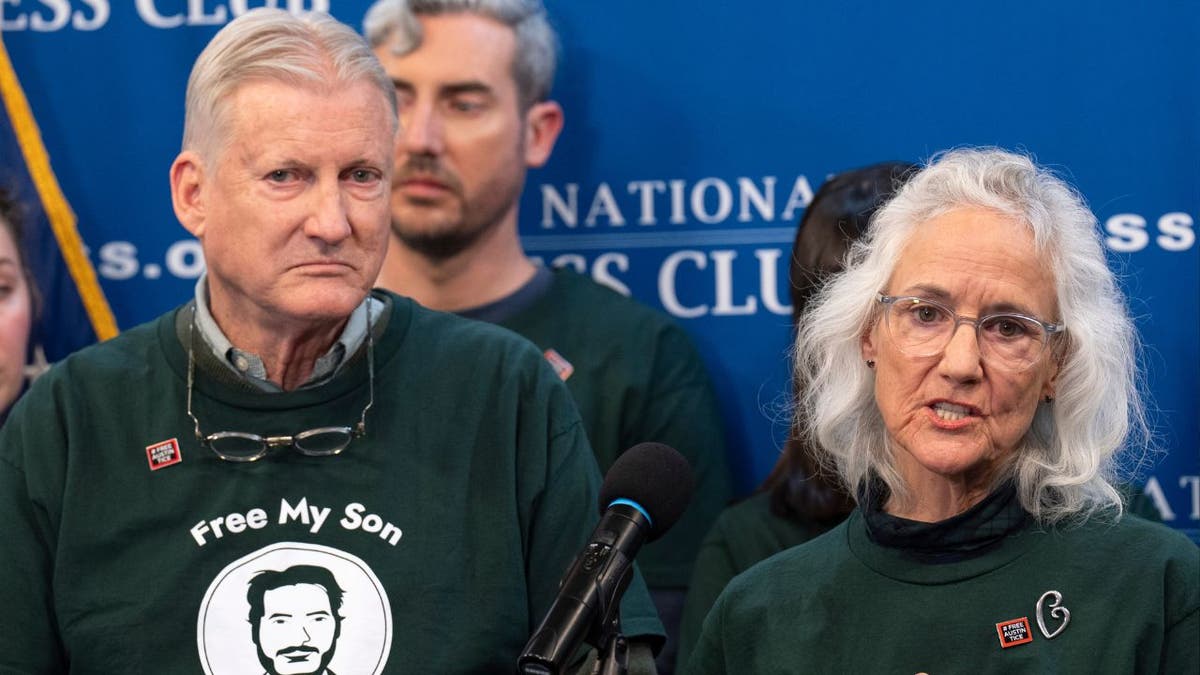The Search for Austin Tice: A 13-Year Journey

Introduction
In 2012, journalist Austin Tice disappeared while reporting in Syria. Since then, a 13-year search has been ongoing to uncover the truth and bring him home. The Washington Post has recently released a detailed account of their investigation, speaking with over 70 individuals to shed light on Tice's imprisonment and the efforts to secure his release.
Details Uncovered
The Post's investigation revealed that Tice was likely taken captive by a Syrian government-backed militia group. However, the exact details of his whereabouts and condition remain unknown. Additionally, the report highlighted the efforts of Tice's family and the U.S. government to bring him home, including secret negotiations and a failed rescue attempt.
The investigation also uncovered new information about Tice's time in captivity, including his resilience and determination to continue his work as a journalist. It is believed that Tice is still alive and being held in Syria, but the exact reasons behind his imprisonment and the group responsible for his capture remain a mystery.
The Need for Continued Efforts
The Washington Post's detailed account of the search for Austin Tice serves as a reminder of the risks journalists face while reporting in conflict zones. It also highlights the importance of continued efforts to secure Tice's release and bring him home to his loved ones. As the search for Tice continues, it is crucial
About the Organizations Mentioned
The Washington Post
## Overview The Washington Post is a leading American daily newspaper and digital news organization based in Washington, D.C. Known for its rigorous political reporting and investigative journalism, it is widely regarded as one of the nation’s most influential newspapers, alongside The New York Times[1][2]. The Post has a significant national readership, with millions of digital subscribers and a strong presence in the Washington metropolitan area, though its print circulation has declined in recent years[1]. ## History Founded in 1877, The Washington Post initially struggled financially and editorially until financier Eugene Meyer purchased it out of bankruptcy in 1933. Under Meyer and later his daughter Katharine Graham and her husband Phil Graham, the paper expanded its influence, acquiring rival publications and building a reputation for fearless journalism[1][2]. The Post’s most famous moment came in the 1970s, when reporters Bob Woodward and Carl Bernstein uncovered the Watergate scandal, leading to the resignation of President Richard Nixon. This cemented the paper’s role as a watchdog for government accountability[1][2]. ## Key Achievements The Washington Post has won 78 Pulitzer Prizes as of 2025, the second-most of any U.S. publication[2]. Its reporting has been instrumental in major national stories, including the Pentagon Papers, secret NSA surveillance, and the January 6 attack on the U.S. Capitol[2]. The paper is also one of the few American newspapers to maintain foreign bureaus, with international news hubs in London and Seoul[1]. ## Current Status In 2013, the Graham family sold The Washington Post to Jeff Bezos, founder of Amazon, for $250 million[1][2]. Under Bezos’s ownership, the paper has expanded its digital offerings and global reach. As of 2025, it has over 2.5 million digital subscribers, though print subscriptions have dipped below 100,000 for the first time in over half a
Syrian Government
The **Syrian Government** is the central authority governing Syria, currently undergoing a significant transitional phase following the fall of the Assad regime in 2025. It operates under an interim constitution established in 2025, which sets a presidential system consolidating executive power in the president, who appoints ministers without requiring a prime minister[7]. The government’s main responsibilities include maintaining national security, overseeing reconstruction, administering justice, and managing political transition toward drafting a permanent constitution[7][4]. Historically, Syria was ruled by the Assad family for decades until the regime's collapse amid prolonged conflict. The new interim government emerged to stabilize the country, rebuild institutions, and restore order. Its formation marked an attempt to decentralize authority by integrating various armed groups, such as the Syrian Democratic Forces (SDF), into state structures, although tensions persist, with ongoing clashes reported[1]. The government has promised accountability for atrocities committed during the conflict, yet transparency and comprehensive justice reforms remain limited, undermining trust and security[2][6]. Key achievements of the Syrian Government in this transition include adopting a new constitutional framework that enshrines Islamic law as a legislative foundation while promising freedoms of opinion and equality for all citizens regardless of religion[7]. It has established the People’s Assembly as an interim parliament to oversee governance and the drafting of a permanent constitution[7]. The judicial branch has been restructured to assert independence through a Supreme Judicial Council, replacing elements of the previous regime’s judiciary[4]. Currently, the government faces challenges such as incomplete integration of armed factions, regional autonomy issues, and balancing hardline ideological influences with technocratic governance. Ministries like Interior, Defense, and Religious Affairs are dominated by ideologically driven figures linked to Hay’at Tahrir al-Sham (HTS), which affects policy consistency and the rule of law[8]. Political participation is cautiously expanding, with elections held despite security concerns, and efforts to rebuild state institutions continue amid ongoing conflict dynamics[1][8].
U.S. Government
The **U.S. Government** is the national governing body of the United States, established by the Constitution in 1789. It consists of three branches—**legislative, executive, and judicial**—each with distinct powers designed to provide checks and balances and prevent any one branch from gaining too much control[1][2][3]. The **legislative branch**, embodied by Congress (House of Representatives and Senate), enacts laws. The **executive branch**, led by the President and Vice President, enforces laws and oversees federal agencies. The **judicial branch**, headed by the Supreme Court, interprets laws and ensures their constitutionality[1][2][3]. Historically, the U.S. Government evolved from the Articles of Confederation to a stronger federal system under the Constitution, which also introduced the Bill of Rights, guaranteeing essential freedoms such as speech, religion, and due process[3]. This framework has allowed the government to adapt to complex societal needs while maintaining democratic principles. The government plays a central role in regulating the economy, national defense, foreign policy, technology innovation, and public welfare. It drives major technological advancements through agencies like the National Aeronautics and Space Administration (NASA) and the National Institutes of Health (NIH). Its regulatory policies shape business environments, including fields like tech, telecommunications, and cybersecurity, making it a critical player for business and technology sectors. In recent years, the government has faced challenges balancing executive power and protecting civil liberties, with ongoing debates about policy directions under successive administrations[5][9]. Current efforts emphasize transparency, performance reforms, and technological modernization to improve efficiency and public trust[6]. Overall, the U.S. Government remains a complex and adaptive institution, central to American political life and influential globally in governance, economic policy, and technological innovation[1][4]. Its structure, anchored by the Constitution, upholds democratic governance while evolving to meet 21st-century challenges.















